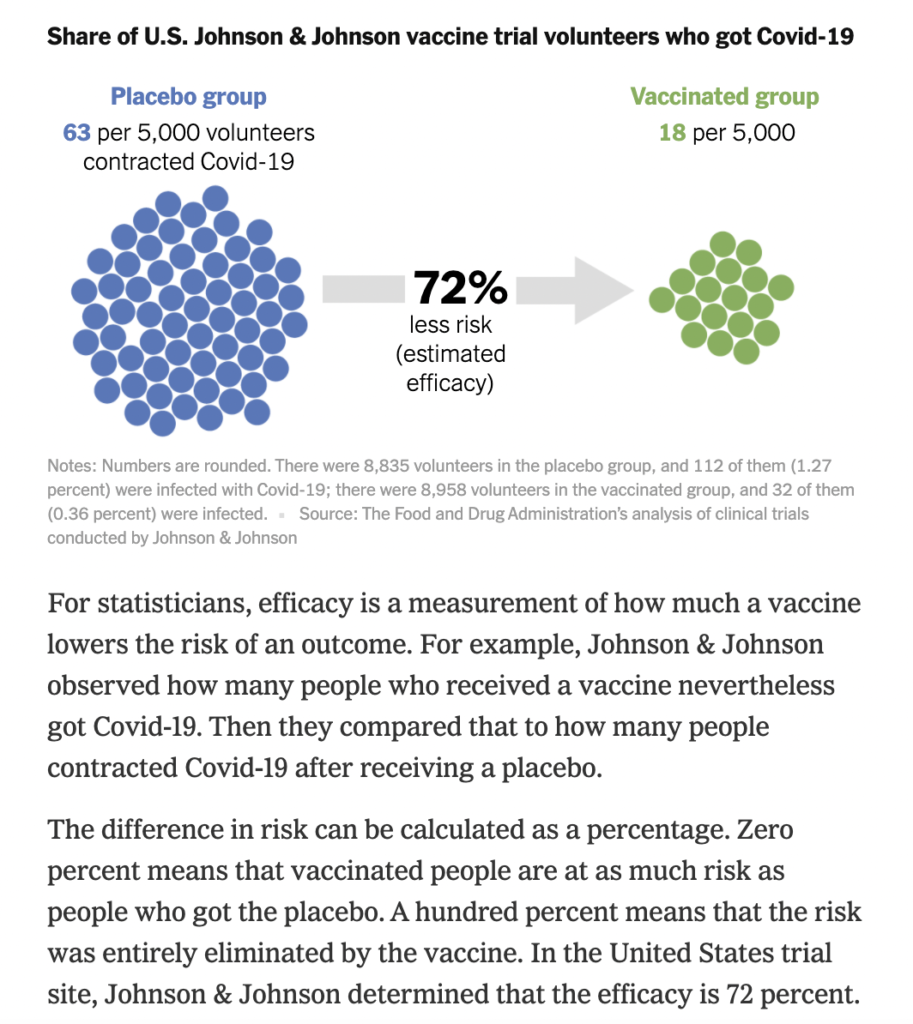The exercises in HW Topic 4.2 ask you to calculate various expected values. The key to doing many of these exercises is to approach them systematically:
- Identify the random variable X whose expected value you are being asked for;
- Write down the entire probability distribution for that random variable;
- Use the probability distribution to calculated the expected value E[X].
Here are a couple worked examples from that HW set:
Problem 3 (extra credit):

Here the random variable is “X = net cost/payout of the life insurance policy.” Since the life insurance policy either pays out or doesn’t (depending on whether Sam survives the next year), X has two possible values, with the following probabilities; i.e., we can immediately write down the probability distribution:
| i (possible value of X) | Probability P(X=i) |
| – 380 | 0.994 |
| 73,450 – 380 | 1 – 0.994 |
Now you can calculate E[X] from the probability distribution! See my HW Calculations spreadsheet for the calculations for this example. (Indeed, I recommend you use a spreadsheet for all of these expected value calculations!)
Problem 4 (extra credit):
“Suppose that from a standard deck, you draw three cards without replacement. What is the expected number of queens that you will draw?”
We discussed the setup of this probability experiment and random variable (X = # of queens drawn) in class. It should be clear that the possible values of X are 0, 1, 2 or 3, and we discussed that there are 52*51*50 distinct outcomes in the sample space of the experiment.
The tricky part of this problem is calculating how many outcomes there are for each of the possible values. For X=0, i.e., 0 queens out of the 3 cards drawn, there are (48*47*46) such outcomes (you first draw one of the 48 non-queens, then one of the remaining 47 non-queens, and then one of the 46 remaining non-queens).
X=1 is even trickier! How many different ways can you draw exactly one queen? Well, there are 3 different permutations that result in exactly one queen:
- a queen first, then two non-queens (4*48*47 such outcomes)
- a non-queen followed by a queen followed by a non-queen (48*4*47 such outcomes); or
- two non-queens followed by a queen (48*47*4 such outcomes)
Adding these up, we see that there are 3*(48*47*4) distinct outcomes which result X=1, and so P(X=1) = [3*(48*47*4)]/(52*51*50).
Again, it is best to organize and perform these calculations in a spreadsheet! See my HW Calculations spreadsheet.
Problem 5 (extra credit):
“A box contains 4 red and 5 green marbles. If 7 marbles are drawn without replacement, what is the expected number of red marbles?”
Clearly the random variable here is “R = number of red marbles drawn” but note that the possible values of R are: 2, 3, 4. (Why?)
Now write down the probability distribution of R. Similar to Problem 3, consider how many outcomes are in the sample space (it’s again a permutations calculation: P(9,7) = 9*8*7*6*5*4*3) and then calculate how many outcomes there are for which R= 2, R = 3, and R = 4.







Recent Comments